It’s hard to accept that DOOM is gone. It simply doesn’t feel his time has passed, and given his knack for capturing the future, it likely never will. Amidst the rush to honor him, we simply needed some more time to process.
Naturally, there was far more to Daniel Dumile than MF DOOM. His earlier work, whether collaborating with 3rd Bass or his own work with KMD, is of its own great value, but there’s no denying that his life behind the mask left the greatest mark on popular culture, and most of our lives.
We’ve chosen to focus on the albums he delivered in this defining era: MF DOOM, King Geedorah, Viktor Vaughn, simply DOOM, plus all the name-mashing collaborations. This is no slight to any era of his work: there aren’t many hip hop artists this side of Ishmael Butler and E-40 who can claim to have touched so many generations while continuing to put out material that feels organic. Check the movement: DOOM probably helped inspire it, from Odd Future to Griselda. He was at home on “The Gas Face” in 1989 as he was alongside a Madlib, DJ Muggs, or even Flying Lotus.
As sad as his loss is, we can all admit that nothing is more DOOM than his having passed on damn Halloween and none of us having a clue for months. Hip hop will never see a supervillain like him again. – Chase McMullen
Listen along with our Spotify playlist.

MF DOOM – Operation: Doomsday
[1999; Fondle ‘Em]
Daniel Dumile was often used as a go-to example of a daring MC who never played by anyone’s rules but his own. The reveal of MF DOOM, the re-emergence and literal alter-ego of KMD’s Zev Love X after the tragic passing of his brother and cohort, DJ Subroc, was certainly startling for some. Who would come out of a prolonged hiatus to cosplay as a comic book villain, especially at a time when the collective trauma of Arnold Schwarzenegger’s bellowing of “What killed the dinosaurs? THE ICE AGE” was still reverberating? Rappers had been gangsters, killers, hustlers, pimps, and more. What did it mean to be a villain?
DOOM introduced the villain persona with his first album, though he didn’t quite perfect it quite yet. For all of its comic book conceptualization, Operation: Doomsday functions much like a regular hip-hop album, hearkening back to KMD’s era. It’s a celebration of rapping and boasting about lyrical skills, albeit with a rapper with a bit more bite than average (earned, to be clear), with friends popping in, choice samples, and plenty of record-scratching – not to mention more pop culture references in one song than in an episode of Family Guy. (Who else was dropping references to specific All My Children characters?)
Operation: Doomsday isn’t perfect. DOOM’s testing the waters with this villain concept, not going full-tilt as he would with stronger releases like Vaudeville Villain. There’s also a sense of sprawl, particularly in the back half, which is already at a disadvantage for having to compete with Side A’s offerings of “Doomsday”, “Rhymes Like Dimes”, “Go with the Flow”, and “Red and Gold”.
However, it finds its way back with the jointly wrenching and uplifting “?”, where Dumile once again memorializes his brother and cements his devotion to his craft, “By candlelight my hand will write these rhymes ’til I’m burnt out.” The powers were always there, mask or no mask. – Brody Kenny

King Geedorah – Take Me To Your Leader
[2003; Big Dada]
This is my favorite DOOM project. It was also my first. I can specifically recall discovering it, a curious 13 year old that caught a glimpse of that awesome cover art, and was sucked right in. Was my nerdy self predisposed to love a Godzilla-themed hip hop album? You’re damn right. Would it stand in proud greatness entirely removed from its loose concept? You better believe it.
Collecting a host of acolytes, DOOM let his cohorts run loose on some of his finest instrumentals, each adopting a Toho-inspired moniker before running amok. DOOM practically held an album length show and tell as to why he was one of the greatest here, whether through his beat-crafting, rapping, or even sound collage work, entwining the likes of the perfect “Monster Zero” into the narrative. No one else ever made a bunch of dubbed-over dialogue into a doper romp through hip hop soundsmithing. It’s no wonder the Wu would come calling. – Chase McMullen
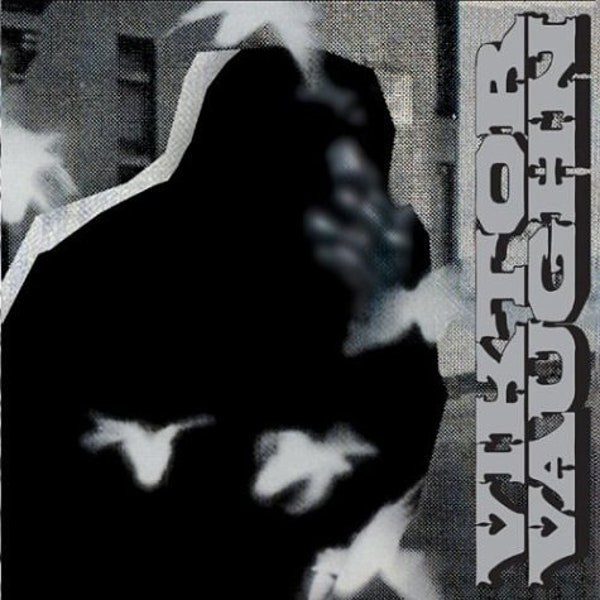
Viktor Vaughn – Vaudeville Villain
[2003; Sound-Ink/Traffic Entertainment Group]
DOOM made a lot of great music, but lyrically Vaudeville Villain is his strongest effort. Released in the middle of his mammoth 2003-2004 run (which comprises about half his discography), dude is just overflowing with rhymes here.
More than any other DOOM release, to me Vaudeville Villain recalls Ghostface’s Supreme Clientele in its ability to eschew popular trends of early 2000s rap in favor of all-out rhyming that covers everything from NYC street tales (the brilliant “Let Me Watch” and “Modern Day Mugging”) to fantastical mythologizing of his Viktor Vaughn pseudonym – two notables from the spastic “The Drop”: “He studied black magic for years in no-man’s land”; “He used his vacation days to watch Babylon fall.”
What’s even more impressive is that he accomplished this performance over the unfamiliar and abstract production of artists on the little-known Sound-Ink label (which released the album), whose beats sound more like Autechre (the transcendent single “Raedawn”) than DOOM’s soul-samples or Madlib’s psychedelic pastiche. The penultimate “GMC” features a guitar riff that sounds ripped from a surf-rock single, repeating after every bar as if it’s daring DOOM to keep spitting. He does. – Ethan Reis
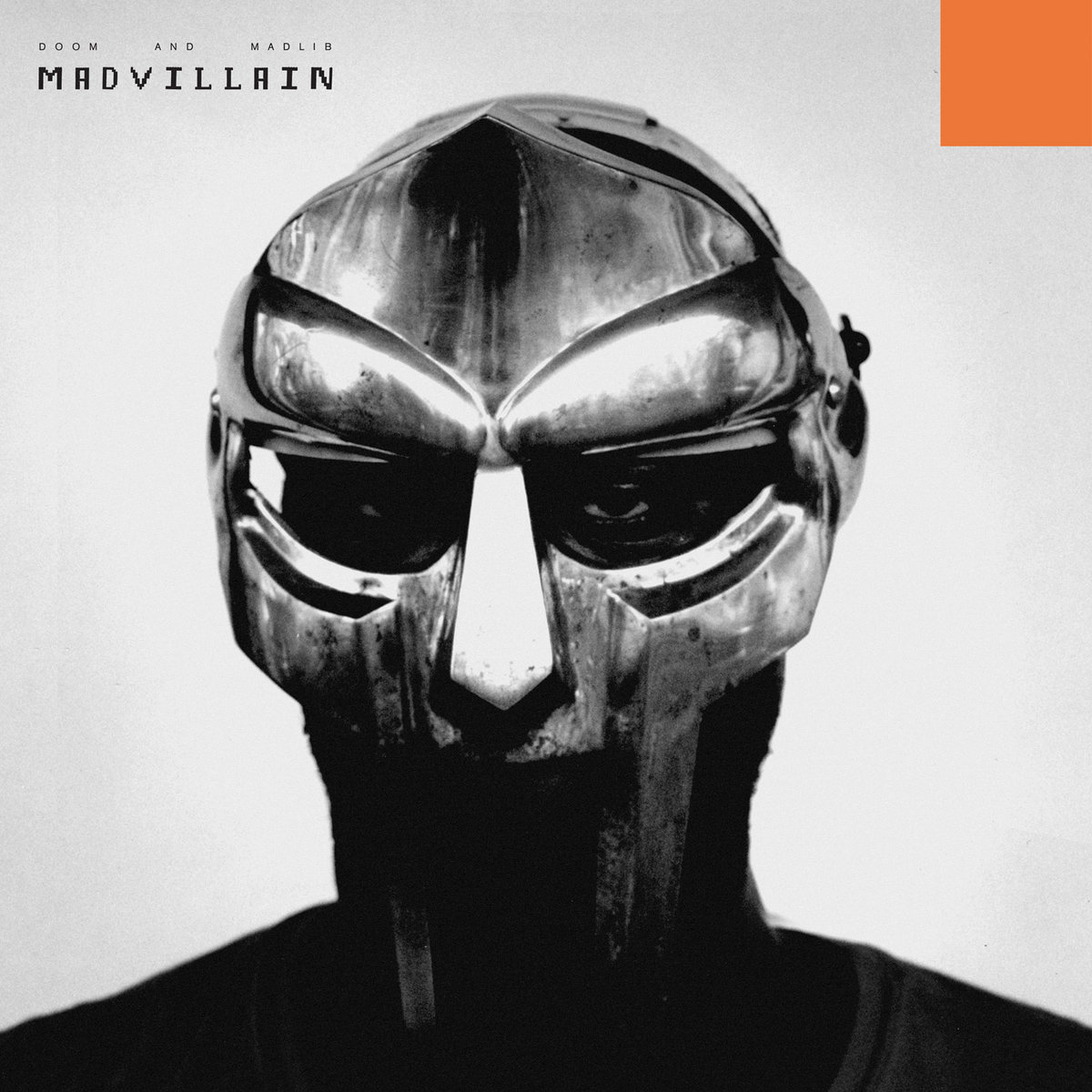
Madvillain – Madvillainy
[2004; Stones Throw]
What more can be said about the mid-2000s hip-hop album that changed the game? DOOM had been delivering high quality work prior – King Geedorah’s Follow the Leader gives this one a run for its money, no doubt – but his team up with Madlib, Madvillainy, is when the world at large started to take him seriously.
The short bursts of obscure lyricism were unconventional for the rap scene at the time, but the stark contrast was an inspiration to the next generation of MCs. Another example of how he became ‘your favorite rapper’s favorite rapper’, Madvillainy is untouchable in the modern age of rap. DOOM was riding high on an unprecedented creative streak that culminated with this piece and contained within are some of his most memorable bars.
Whether hallucinating after drinking Drano (“Rainbows”), rapping against himself (“Fancy Clown”), or reminding us all how to spell his name (“All Caps”), DOOM was setting the bar high for the next torchbearers of rap. A recent article stated that the long gestating sequel was “85% done” according to Madlib, which seems to be what we’ve heard for a long time, but with his recent passing perhaps the project will finally see the light of day. As Madlib once put it though, “it has to be a continuation of the last one. Not better or worse, just a continuation.”
While the world waits on that, we still have a rich discography from easily one of the best rappers, best lyricists, and best personalities in hip-hop, and a lot of that affection comes from Madvillainy’s far reach and unending loving appraisals. – Tim Sentz
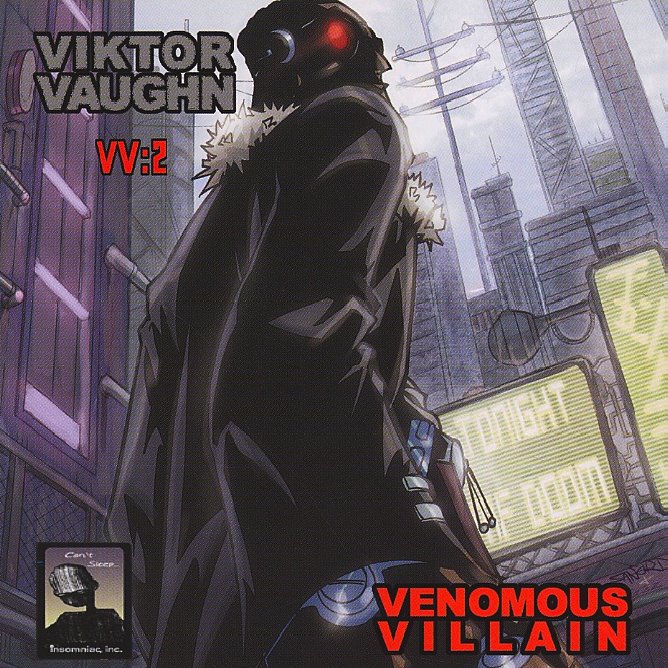
Viktor Vaughn – Venomous Villain
[2004; Insomniac, Inc.]
Beyond being one of the most overlooked albums in DOOM’s catalog, Venomous Villain also ranks among the most unusual. All too often considered to pale in comparison to its predecessor, the fact is, what’s there largely fits right alongside its beloved brother. The production is beyond forward-thinking, with even an early Diplo presentm and DOOM fires on all cylinders.
Then it simply seems to… stop. It’s almost as if the unknowable Demile got two thirds of the way there and figured, ‘Hey, let’s call it a day,’ and slapped a remix on where the rest of the LP should go. So, much rather than being a misfire or uninspired sequel, it simply feels somewhat unfinished. What’s there is every bit worth your attention as anything in the master of evil’s discography. Hell, who didn’t want to hear DOOM and Kool Keith together? This is where you can, folks. – Chase McMullen

MF DOOM – MM…Food
[2004; Rhymesayers]
It’s the nature of food to bring with it aspects of culture, of social interaction and of alchemical processes – of mixing and melting things, of seasoning and experimenting. Of gathering ingredients and gathering a social circle. We all need nutrients, but we also need communal ties to nurture our souls. So it’s not far fetched to liken making dinner to producing a rap album; cooking samples and stretching ingredients into a hot soup.
But what made DOOM such a brilliant musician was that he expertly reassessed the themes of ingredients and meals – cake, gumbo, or beer – to talk about a wide array of typical rap semantics. Sure, that also makes the album political, but as with the central four-song-spanning “Skit”-like medley, the attitude is implicitly ironic.
In that, MM…Food is a deeply humorous take on the genre, adding a colourful playfulness to DOOM’s supervillain personality in an era where hip hop was dominated by party rappers like Nelly and 50 Cent. And while still firmly tied to the tradition of 90s Rap (somewhere between Nas’ flow and Wu-Tang’s appropriation of after school TV programming), a lot of the album’s material proved to be visionary: “Hoe Cakes” could easily pop up on a current Tyler the Creator project, “One Beer” would fit right into Boldy James’ The Price of Tea in China, and “Kon Karne”’s Sade sample anticipates Vaporwave.
It also includes one of the most ingenious samples of all time, using a guitar solo from Dave Matthews’ “Space Oddity” cover on “Rapp Snitch Knishes”, where Mr Fantastik delivers an absolutely splendid feature and DOOM drops an all time greatest bar: “Do you see the perpetrator? Yeah, I’m right here / Fuck around, get the whole label sent up for years / There’s rules to this shit, fools dare care / Everybody wanna rule the world with tears for fear”. – John Wohlmacher
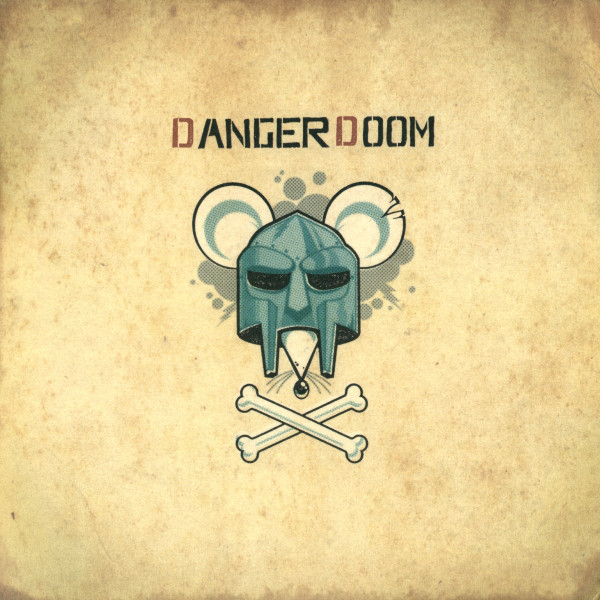
DANGERDOOM – The Mouse and The Mask
[2005; Lex/Epitaph]
Although both DOOM and Danger Mouse borrowed their monikers from animated characters, it wouldn’t be inaccurate to say that the thought of a collaboration between the two seemed as unlikely as a crossover episode between the Marvel supervillain and the murine spy. The rapper had been on a hot streak of releases which dealt in streetwise quips and slurring wordplay that coupled neatly with his own grainy, sample-heavy production. The producer was still best known for his breakout mashup tape The Grey Album, and was just coming off the back of producing Gorillaz pop opus Demon Days. Purely from a tonal standpoint, a mesh of their styles seemed unlikely to work.
Yet, at this time in the mid-2000s, DOOM was in free flow, saying yes to everything and knocking it all out of the park no matter what was thrown at him. Yes, Danger Mouse’s production was multiple shades lighter than anything we heard him rap over before (or since), but on The Mouse and The Mask they found an extremely fertile middle ground using the milieu of samples and characters from Adult Swim’s stable of cartoons – from Harvey Birdman to Spaceghost to the various members of Aqua Teen Hunger Force and beyond.
This homely affair allowed DOOM to enter a comfortable zone to rap about: namely stoned in front of the TV. Whether simply lording it up on the couch, comparing his enemies to bumbling cartoon villains, or asserting that he deserves his own late night talk show, there’s a relative lightness to his raps throughout – and punchlines aplenty.
Coming off the back of a year when he put out Madvillainy and MM…Food, The Mouse and the Mask might have seemed a little disposable at the time, but looking back on it all these years on, it stands out in his discography as the most purely fun release. It’s a genuine pleasure to hear him so fancy free, spewing shit like he’s in the comfort of his own home, not giving a care who he might offend – if there were more snacks and cartoons to be ingested, there was no stopping him. – Rob Hakimian

DOOM – Born Like This
[2009; Lex]
Swaggering in with a distinctive air of supervillainy, 2009’s Born Like This was greeted by many as a return to form for Daniel Dumile after a four-year period of relative obscurity, during which he infamously sent imposters to perform gigs in his stead (to the amusement of some and the consternation of many).
Billed simply as DOOM – presumably the MF was dropped because the mask on the cover is made of ancient stone – Dumile brings his dual threat A-game of light-footed yet blunted boom-bap production (with help from Madlib and dusted-off J Dilla samples) and densely knotted lyricism to bear on an album that nimbly walks the delicate line between goofy superhero references, turn-your-brain-inside-out rhyming prowess, and some Bukowski-indebted dark-ass cynicism. Its madcap charm lies in its seeming incoherence, which gradually coalesces upon dedicated listening into an underrated high point of DOOM’s discography: “Gazillion Ear”, “Absolutely”, “Cells” and “That’s That” are dead certs for any best of playlist.
Given how rich that back catalogue is with collaborations, it’s striking, and now desperately poignant, to realise that Born Like This was Dumile’s sixth and final solo album. One cannot help but wonder what might have been. The album turned out to spell a different end for Dumile at the time. A British-born migrant to the US, Dumile never claimed citizenship, and following a rare European tour in support of his new record, he was denied reentry to the country he had called home for decades. It was yet another sad episode in a life marked with profound tragedies. The mask hid tears – as with all supervillains, Dumile’s performative malevolence was pain turned inside out – but his music brought, and will continue to bring joy to veteran listeners and to kids discovering him for the first time alike. – Andy Johnston
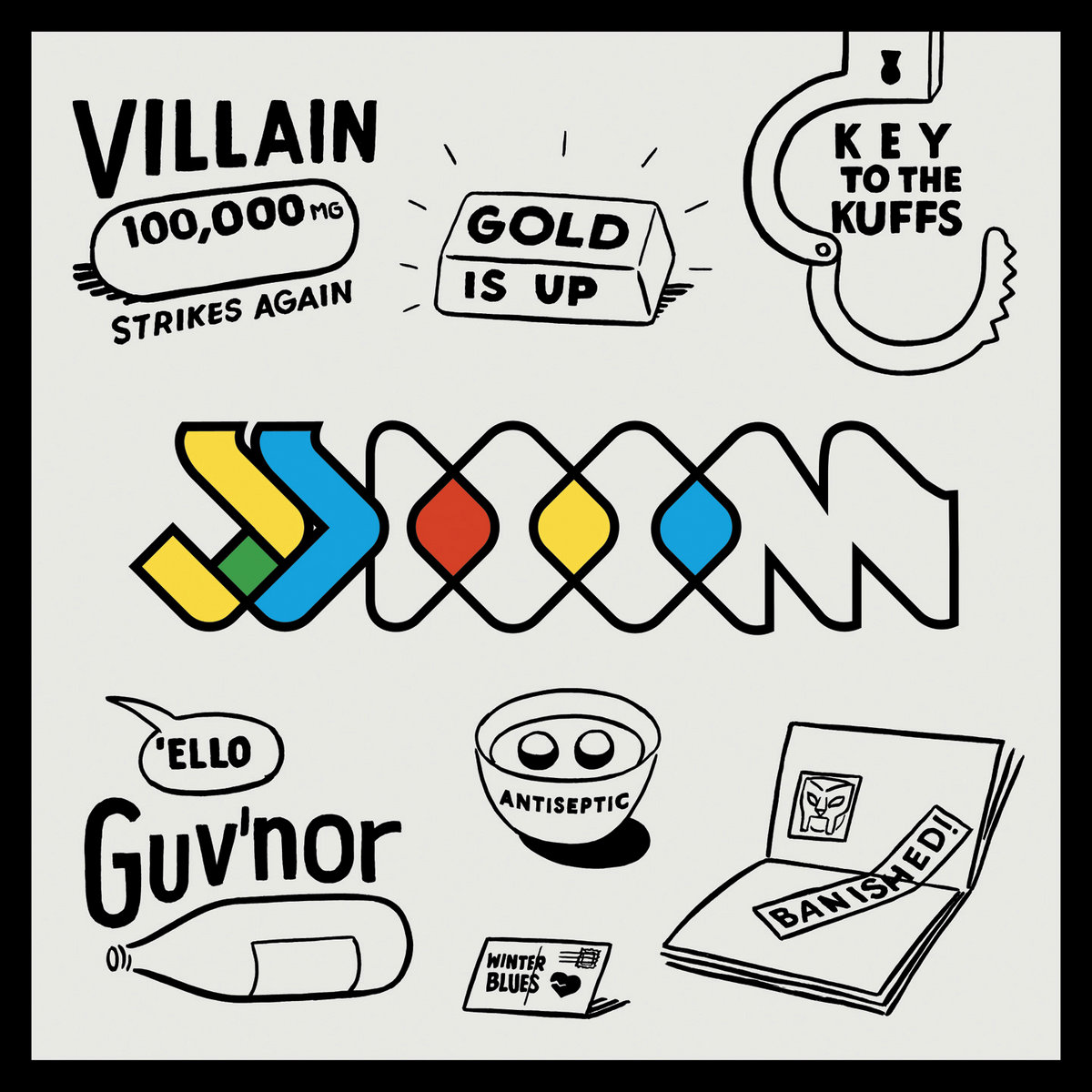
JJ DOOM – Keys to the Kuffs
[2012; Lex]
There are so many moments in DOOM’s career that are tempting to call underrated, but for my money, this is the one. For all his own brilliance on the boards, Dumile clearly found it freeing to simply be able to do his thing over others’ beats, most famously display alongside Madlib, of course, but Jneiro Jarel made nearly (yes, seriously) as worthy a companion.
Having provided a perfect background for unsung Goodie Mob member Khujo Goodie on Georgiavania, Jarel made for a surprising but supreme collaborator for DOOM on Keys to the Kuffs. Naturally, Goodie appears, as do (sheesh) Damon Albarn and Beth Gibbons on a riotous, joyous connection of an album. The beats are fresh. The raps are perhaps fresher. It’s a glorious package. If there’s any album you haven’t heard of DOOM’s while you’re grieving, this may be the most delightful surprise. – Chase McMullen
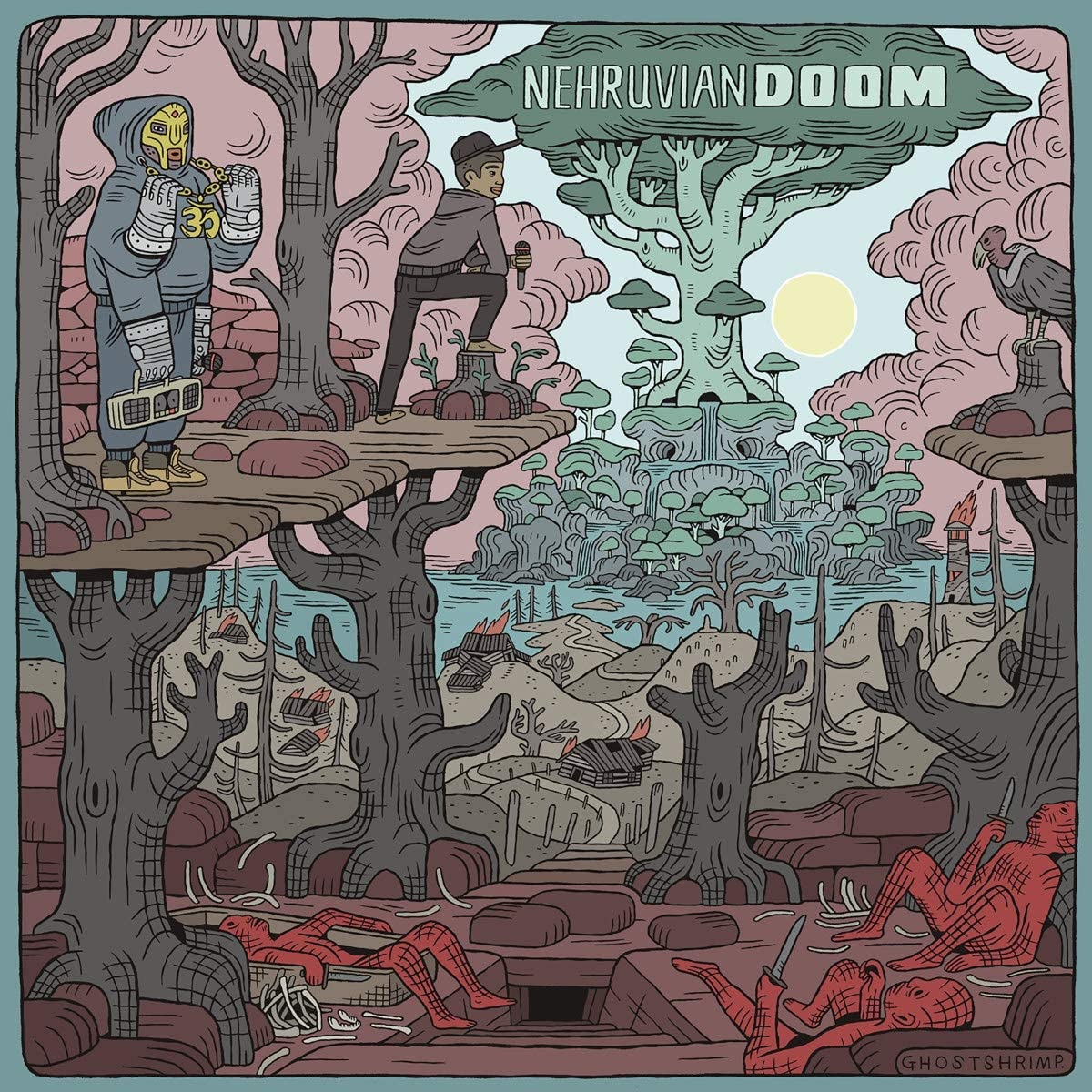
NehruvianDOOM – NehruvianDOOM
[Lex; 2014]
DOOM takes to the controls on this collab album with young upstart Bishop Nehru, but his vocals pop up here and there. The lyrical interplay between the two on pure beauts like “Om” and “Caskets” belies their 25 year age gap as they perform as peers. “Great Things” is pure joy, while DOOM’s production skills are rarely bettered than on “Coming For You”, which is brooding and intense.
NehruvianDOOM is DOOM’s most positive, spiritual and laidback album. The focus on meditation, love and optimism allows a thematic flow that’s complemented by the relational dynamic between the master of the art and the burgeoning talent of Nehru. An under-appreciated record, its lukewarm critical reception on release has perhaps dented its place in DOOM’s legacy, yet, to these ears, it stands shoulder to shoulder with the more canonised work. – Todd Dedman
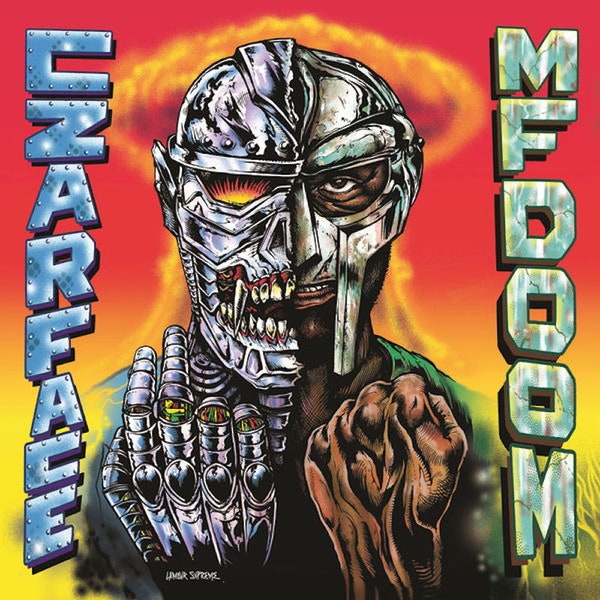
Czarface & MF DOOM – Czarface Meets Metal Face
[2018; Get On Down/Silver Age]
Back in 2018, Czarface Meets Metal Face was written off as a pithy collab album that was deemed unnecessary. With his recent passing, fans of MF DOOM will reflect the most on Madvillainy no doubt, as the tandem of DOOM and Madlib were virtually un-fuck-with-able. But as a now pseudo-swan song by the underground’s most prolific (at one time) wordsmith, Czarface Meets Metal Face can be appreciated under a different light.
Hardly on par with either’s best work, everyone still meets in the middle for a fun indictment on pop culture. Both utilized comic books and wrestling references so heavily that it became commonplace for others to do it. Which makes it more fitting that one of DOOM’s biggest fans – Open Mike Eagle – makes an unforgettable appearance on album highlight “Phantoms”. Czarface gets minimal fanfare obviously, especially since their most notable releases have been collaborations (the last one with Ghostface Killah). But the boom-bap 90s production here feels like a natural throwback to the less dark glory days of hip hop. Instead of focusing on narratives, the foursome bounce between their beefs with culture and the state of hip-hop (“Bomb Thrown”), but it’s all laced with tongue-in-cheek implications (“Meddle with Metal”), and never with spite directed towards any single tangible entity.
It’s not the star-making performance Czarface may have hoped for, nor is it even a victory lap for DOOM. But it’s loud, it’s bombastic, and now has its place in history that will hopefully mean it’s viewed with more fondness. – Tim Sentz

